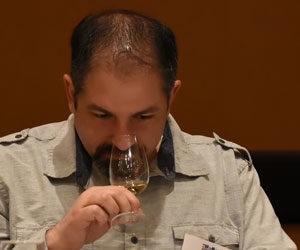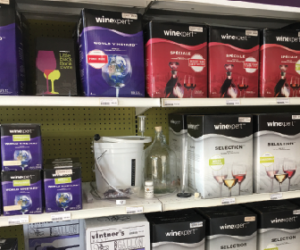The what of this process is simple . . . add sugar to sweeten up your wine. It can be any type of wine or fermented beverage — white, red, fortified, dessert, mead, cider, country fruit, apéritif, or digestif. Winemakers have a plethora of sugars to choose from — table sugar (sucrose), honey, grape juice or juice concentrate, raw cane sugar, maple syrup, agave, apple juice concentrate (for cider), etc. Seems simple right? But the trick is doing it well. Balance is a fundamental part of crafting a drinkable wine and the level of sweetness is one of the key components.
Why Backsweeten?
First and foremost, backsweetening is an optional task that can easily ruin your efforts in producing wine when not handled properly. Carbonation in bottle with popping corks, overly sweet wine, and rotting geranium aromas; these are some of the problems typically associated with backsweetening-gone-wrong efforts. So why go through the effort when there are other options to craft a sweeter wine (e.g. arresting fermentation with spirits)? That’s easy . . . the ability to fine-tune every batch you plan to sweeten as well as consistent results when done properly.
Acidity is one of the other key components in wine and sometimes the balance of sweetness and total acidity in a dry wine can be skewed heavily towards the acidity. A winemaker may consider backsweetening the wine a little to balance this out as sugar will reduce the perception of acidity. Another reason could be that you are just trying to produce a light, refreshing porch-sipper . . . or you’re making a wine for someone with a sweet tooth. After all, there is a reason that sweet wines sell so well at many wineries . . . there are a lot of folks with a sweet tooth in the world. Finally, backsweetening can enhance “fruitiness” character, especially in country fruit wines. Adding a fruit concentrate can really help build this characteristic if you are looking for more of a wine-cocktail type experience.
When to Backsweeten
This process most often occurs just prior bottling although a bit of time of bulk aging and retesting prior to bottling is a good thing. Also, it takes a little time for the proper yeast arresting chemicals (sorbate and sulfite) to fully affect the yeast. One of the biggest concerns is refermentation in the bottle and a little time to allow the sugars to “set” in the wine and make sure the wine remains stable at room (or cellar) temperature can be reassuring.
How to Backsweeten
There are two fundamental rules to backsweetening. First, if the wine has been inoculated with or been through malolactic fermentation, then potassium sorbate should not be used to stabilize the wine. In fact, backsweetening should probably be avoided. If lactic acid bacteria (LAB) are present and metabolize sorbic acid (from potassium sorbate), the result may be hexadienol, an odiferous compound, likened to rotting geraniums. Second, wines that get backsweetened need to be stabilized using the combination of potassium sorbate and metabisulfite. The sorbate acts to prevent any further yeast reproduction. If sorbate is not added with the metabisulfite, you run the risk of simply stunning the yeast and they may regain enough of a footing in the wine to referment again after bottling. Add sorbate at the rate of a ½ tsp. per gallon (3.8 L) along with a normal bottling sulfite regime based on our sulfite calculator: https://winemakermag.com/sulfitecalculator. Generally it’s good practice to add the sulfite, then wait 12 hours before adding the sorbate. Then wait another 48 hours before adding the sugar.
There are two ways to approach backsweetening wine, the guesstimate approach and the precision approach. If you want to take the guesstimate approach, then you need to know some basics. Dry wine means that the wine has fermented to completion and, as a rough guideline, is less than 0.4% residual sugar (4 g/L). Think many Old World reds or Sauvignon Blanc. Semi-sweet wine generally runs in the 0.4–2% sugar (4–20 g/L) range, which is common for say a semi-sweet or off-dry Viognier or Riesling. Above 2% (20 g/L) and you are entering the sweet wine range, with examples like Moscato or Port wines. Clinitest® is a quick and easy way to go about measuring the residual sugar in your wine but hydrometers can work as well. A typical dry wine may finish at a gravity of 0.995 and for each 1% sugar increase, the hydrometer reading will rise about 0.004. If you want to backsweeten from 2 g/L to 5 g/L (0.2% to 0.5%), simply add 3 g of sugar for every liter of wine in your fermenter. This will allow you to guesstimate the correct level of sweetness, but beware, oversweetening happens quickly.
Bench trials allow you to dial in exactly how much is the right amount by taste and not simply estimating based on pre-conceived sugar levels to make a Riesling semi-sweet. To perform bench trials though, you’ll need a few tools: A good scale, a 1-mL graduated pipette, a 50-mL graduated cylinder, and a wine thief. Pull your wine out of the fermenter in the thief and measure three aliquots of 50 mL of wine. Make a sugar solution by mixing 25 g of sugar into 25 mL of water, then top up with water to 50 mL of sugar solution. You will need to heat this up to get it to dissolve. This is now a 0.5 g/mL (500 g/L) sugar solution. So each mL you add will add 1% sugar (10 g/L) to your 50-mL samples. You can start with some extremes if you are trying to decide if you want to go full sweet wine vs. semi-sweet route, or you can dial it in a smaller range if you’re trying to hone in how much sugar to make that semi-sweet Riesling. But be sure to pour a separate control sample as well to test against the dry version. My final piece of advice is that no matter which approach you take, even after identifying the “best” amount from trials, add in increments and taste as you go along. If you’re having trouble deciding . . . crowd-source! Get some friends over and see what they think.






